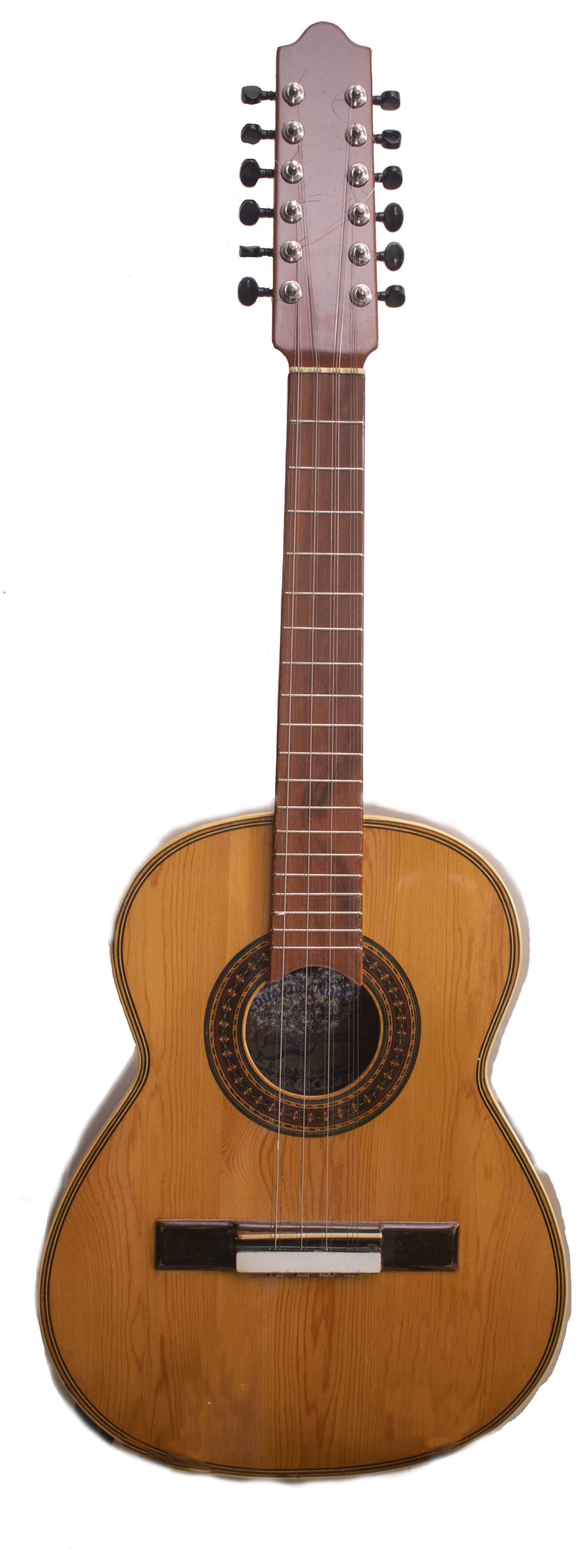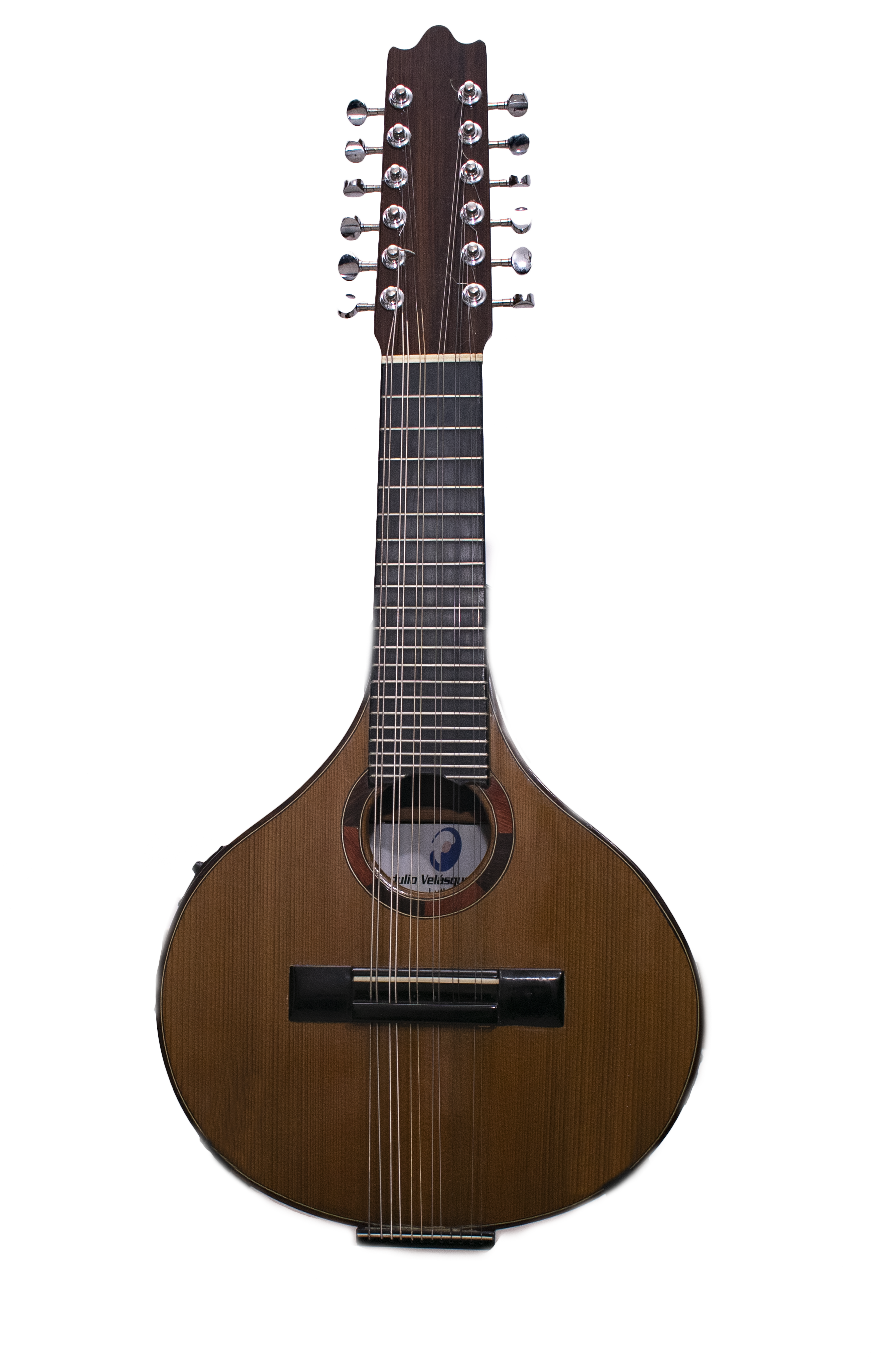The rhythms (genres) performed in Colombian Andean music can be broadly categorized in 3 types:
-
The first group includes derivations of the European Hispanic ternary colonial songbook whose genre with the greatest impact in America has been the waltz, but also includes other salon genres and peasant dances.
Besides the waltzes themselves, this group also includes pasillos and guabinas, among others.
Pasillo is a popular dance from Colombia that evolved from the European waltz. This musical genre also exists in Venezuela as an Andean waltz, and in Ecuador as an Ecuadorian pasillo.
It is known that some Central and South American composers, among which the Argentine Terig Tucci stands out, have cultivated it.
Pasillo is usually written in 3/4. Its most frequent form is ternary although there are binary and even quaternary pasillos.
In Colombia there are three clearly identifiable types of pasillo: one that is born from the traditional expression to encourage regional celebrations called “pasillo fiestero” (partying pasillo), fast, lively and cheerful, whose dancing expression as a couple is demanding and colorful;
the pasillo song, romantic and sentimental pasillo closely linked to the practice of nighttime serenades,
and the concert pasillo that is rooted in the popular, draws on academic knowledge and is positioned in the context of chamber music.
-
Bambuco
Of the Andean Colombian airs, the Bambuco is the most common in the region. Its existence is mentioned as early as 1790 when the oath of Carlos IV was celebrated in the south of the country as the new king of Spain.
Historically linked to the deeds of independence, it remains today among indigenous groups, black and mestizo communities, rural and urban settings.
Bambucos are loose couple dances, songs and festive folk dances. Bambucos can have different names and musical species throughout the Andean and Pacific regions of Colombia.
Its rhythm, characterized by syncopation and irregular accentuations uncommon to Central European scholarly music, initially led musicians to propose an excessively complex form of writing it.
This had a critical influence on the Bambuco’s evolution, stopping it from transcending the national borders for many decades.
In 1957, the musician Luis Uribe Bueno puts into practice a writing proposal in 6/8 that allows metric-harmonic accents to be correctly located, and facilitates its reading and interpretation.
However, given the peculiar characteristics of this genre, a writing is proposed combining, and sometimes simultaneously, the 3/4 and 6/8 meters (bi-metric).
This phenomena is known as sesquialtera and comes from ancient Iberian Hispanic and Colombian peasant dances.
-
Danza
The third large group includes the genre called danza, which comes from the habaneras connected to the European Hispanic contradanzas.
This rhythm constitutes one of those aspects of Latin American music that crosses the territory from Mexico to Argentina,
evolving in very different ways: habanera in Cuba, danza in Colombia, danzón in both countries, milonga in Argentina, maxixe in Brazil.
Its rhythm comes from the contradanza (an adaptation of word country-dance) of the nineteenth century. This rhythm exists in the country as a bucolic song of longing,
and as an instrumental expression of saloon music. In the Andes region, it is not used for dance today; however, it is used as a traditional dance among the people in the Pacific coast.
The main rhythmic characteristic of Colombian danza is its simple binary metric, the occasional stressing of the first pulse, and an accompanying rhythmic pattern as illustrated in Figure above.
 The Colombian Andes is one of the five major geographical and cultural regions in which the country was divided in an attempt to understand its physiographic and sociocultural diversity.
The Colombian Andes is one of the five major geographical and cultural regions in which the country was divided in an attempt to understand its physiographic and sociocultural diversity. The tiple is a plucked string chordophone of the guitar family mostly associated with Colombia, and considered the national instrument.
It is slightly smaller than a guitar, with 12 strings grouped in four tripled courses. The first group consists of three steel strings.
The other two groups have a copper string (or wound brass) in the middle of two steel strings.
The tiple is a plucked string chordophone of the guitar family mostly associated with Colombia, and considered the national instrument.
It is slightly smaller than a guitar, with 12 strings grouped in four tripled courses. The first group consists of three steel strings.
The other two groups have a copper string (or wound brass) in the middle of two steel strings.


